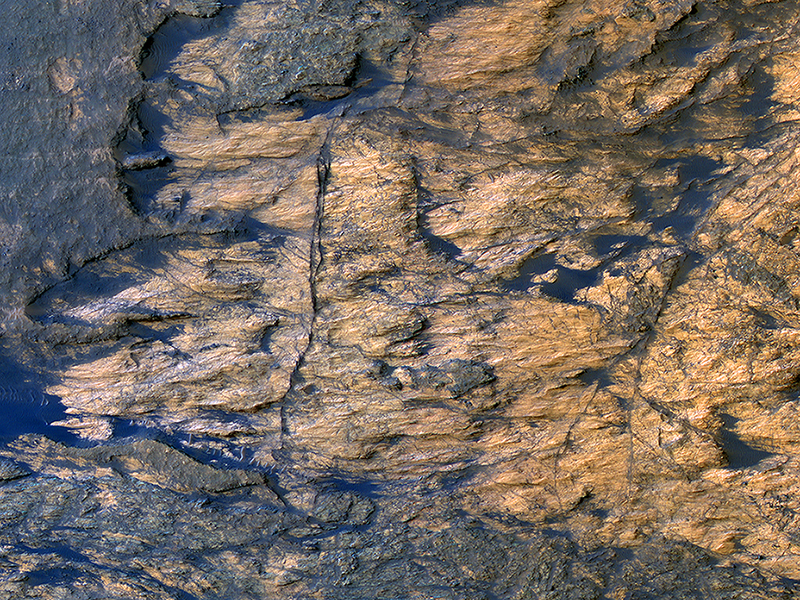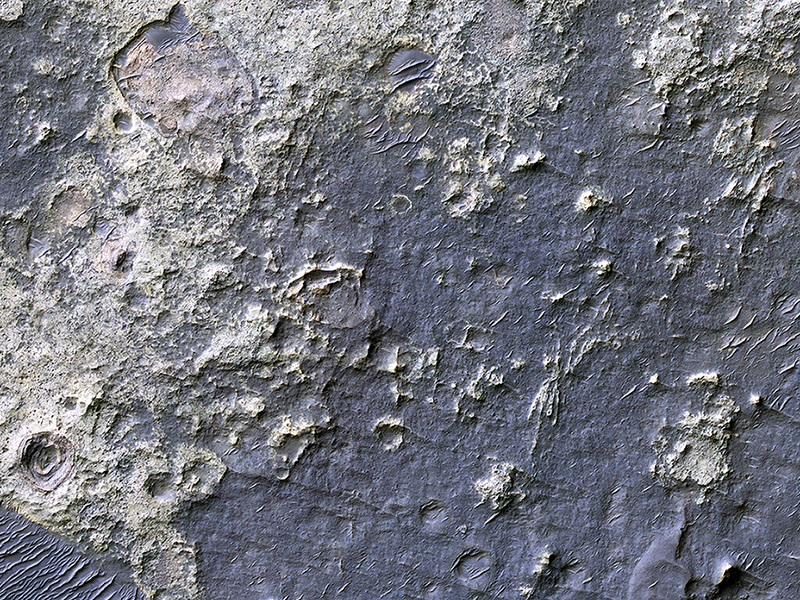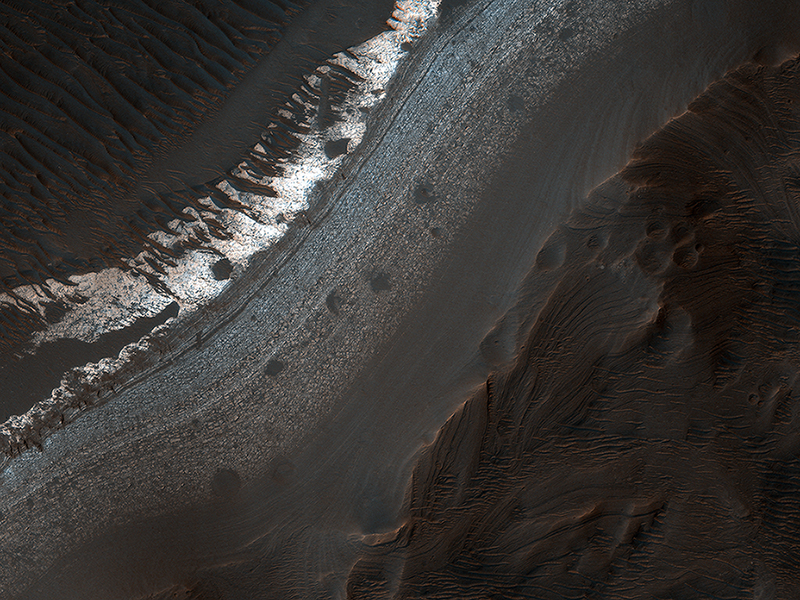Alfred McEwen wrote:Bedrock Outcrops in Kaiser Crater (ESP_012239_1330)
This enhanced-color image shows a patch of well-exposed bedrock on the floor of Kaiser Crater.
The wind has stripped off the overlying soil, and created grooves and scallops in the bedrock. The narrow linear ridges are fractures that have been indurated, probably by precipitation of cementing minerals from groundwater flow. The rippled dark blue patches consist of sand.
This is a stereo pair with ESP_012516_1330.
John Grant wrote:Fans and Crater Floor Deposits Southeast of Vinogradov Crater (ESP_016843_1590)
This white, purple, and pink surface is located on the floor of an impact crater on the southeast rim of the larger Vinogradov Crater in southern Margaritifer Terra.
The surface consists of what is left of a series of thin layers that subsequently eroded to create a “bullseye” pattern. The rough, etched appearance of the surface is similar-looking to deposits in other craters in the region and that are often associated with alluvial fans. The apparent ease and manner in which the materials are eroded relative to nearby fans and crater materials suggests they are fine-grained and the dominant agent of erosion is the wind.
Although the origin of the deposits remains speculative, their physical character and common association with alluvial fans suggests they may be the result of deposition into a shallow lake or playa enabled by water flowing off the adjacent fan surfaces.
John Grant wrote:A Closer Look at Holden Crater (PSP_003077_1530)
Holden Crater in southern Margaritifer Terra displays a series of finely layered deposits on its floor (white and light purple in an enhanced color image). The layered deposits are especially well exposed in the southwestern section of the crater where erosion by water flowing through a breach in the crater rim created spectacular outcrops.
In this location, the deposits appear beneath a cap of alluvial fan materials (tan to brown in this image). Within the deposits, individual layers are nearly flat-lying and can be traced for hundreds of meters to kilometers. Information from the CRISM instrument on the Mars Reconnaissance Orbiter suggests that at least some of these beds contain clays.
By contrast, the beds in the overlying alluvial fan are less continuous and dip in varying directions, showing less evidence for clays. Collectively, the characteristics of the finely bedded deposits suggest they may have been deposited into a lake on the crater floor, perhaps fed by runoff related to formation of the overlying fans.
John Grant wrote:Layered Deposits in Uzboi Vallis (PSP_010329_1525)
Layered deposits in Uzboi Vallis sometimes occur in alcoves along the valley and/or below where tributaries enter it. These deposits may record deposition into a large lake that once filled Uzboi Vallis when it was temporarily dammed at its northern end by the rim of Holden Crater and before it was overtopped and breached allowing water to drain back out of the valley.
Layered deposits similar to those here may remain preserved where they were protected from erosion during drainage of the lake. Data from the CRISM instrument onboard MRO shows that clays are within these deposits that may differ from clays found elsewhere on the valley floor. Hence, the clays in these layers may have been washed into the lake from surrounding clay-bearing surfaces.
This is a stereo pair with PSP_008338_1525.
Credit: NASA/JPL-Caltech/University of Arizona
<< Previous HiRISE Update



